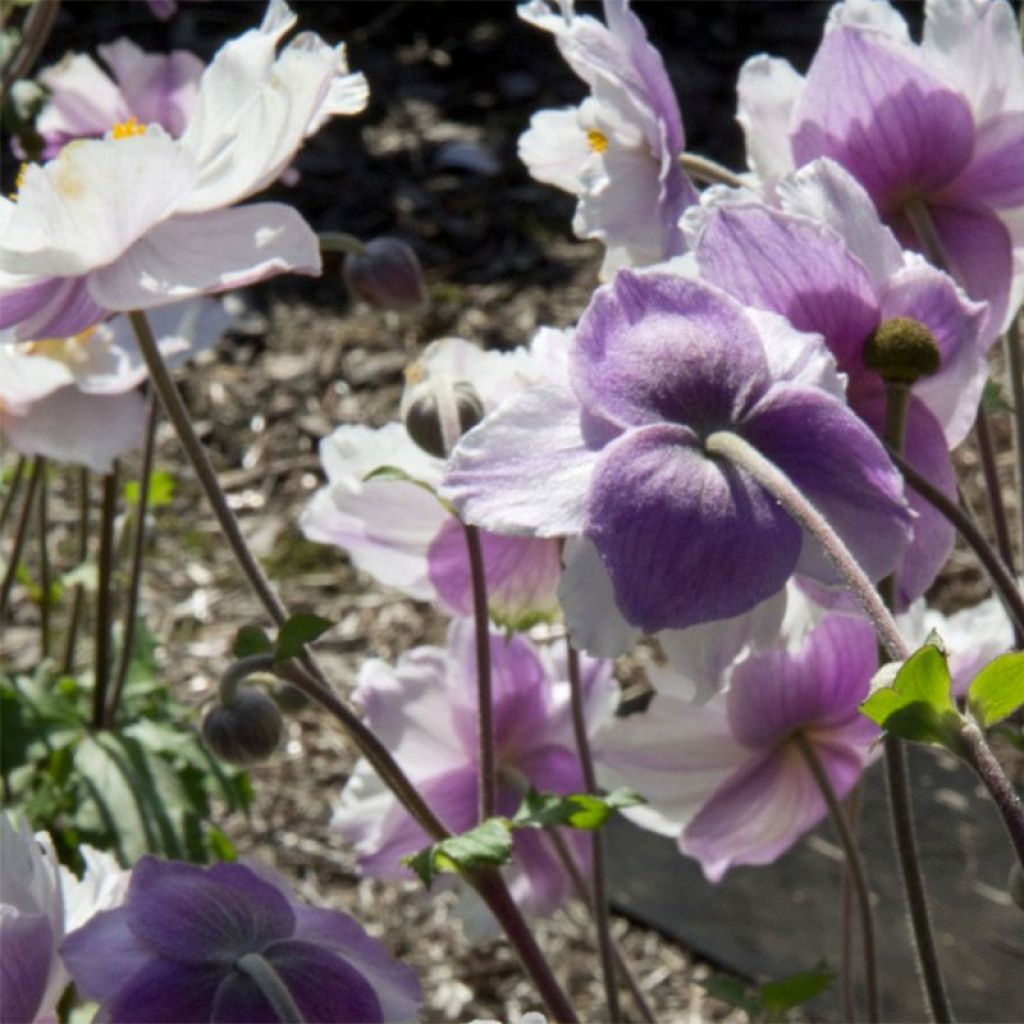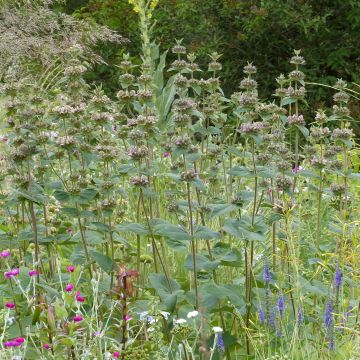

Anemone Dreaming Swan - Japanese Anemone


Anemone Dreaming Swan - Japanese Anemone


Anemone Dreaming Swan - Japanese Anemone


Anemone Dreaming Swan - Japanese Anemone


Anemone Dreaming Swan - Japanese Anemone
Anemone Dreaming Swan - Japanese Anemone
Anemone rupicola x hupehensis Dreaming Swan
Japanese Anemone
Grows well in shade. Not yet in flower.
Florence, 16/07/2022
Special offer!
Receive a €20 voucher for any order over €90 (excluding delivery costs, credit notes, and plastic-free options)!
1- Add your favorite plants to your cart.
2- Once you have reached €90, confirm your order (you can even choose the delivery date!).
3- As soon as your order is shipped, you will receive an email containing your voucher code, valid for 3 months (90 days).
Your voucher is unique and can only be used once, for any order with a minimum value of €20, excluding delivery costs.
Can be combined with other current offers, non-divisible and non-refundable.
Home or relay delivery (depending on size and destination)
Schedule delivery date,
and select date in basket
This plant carries a 12 months recovery warranty
More information
We guarantee the quality of our plants for a full growing cycle, and will replace at our expense any plant that fails to recover under normal climatic and planting conditions.
Would this plant suit my garden?
Set up your Plantfit profile →
Description
The 'Dreaming Swan' Hybrid Anemone is a variety quite similar to the 'Ruffled Swan' Japanese anemone, but its growth is more compact and its flowers show marked dimorphism depending on whether they appear in spring or summer. The first ones are simple pale pink corollas, then they fade when the semi-double, bicoloured flowers appear, white with a deep blue-violet reverse. The show starts in late spring, continues into summer, and accompanies the arrival of autumn. This magical plant is also an excellent vigorous and floriferous perennial, which proves to be prolific without being invasive. It prefers mild sun or partial shade, and moist soils even in summer.
The 'Dreaming Swan' Anemone is an herbaceous perennial plant belonging to the Ranunculaceae family. More precisely, it is a variety belonging to a series of hybrids called 'Swan', of which the flagship 'Wild Swan' received an award at the RHS Chelsea Flower Show. This Japanese Anemone, likely resulting from a crossbreeding between Anemone rupicola and A. hupehensis, is a new playful creation full of charm and surprise. Earlier than most Japanese anemones, its flowers bloom from June-July onwards.
A highly hardy perennial plant, it grows from fibrous tubers and forms large, vigorous, and rounded clumps over 40 cm (16in) in diameter, over time. 'Dreaming Swan' bears stout and erect flower stalks that reach 45 or 60 cm (18 or 24in) in height. The flowers measure 8 to 9 cm (3 to 4in) in diameter and have slightly crumpled petals. The peculiarity of its flowering lies in the fact that the flowers produced in late spring are very different from those that appear later in the season. From a distance, the semi-double flowers appear very pale mauve, then as you get closer to the plant, the different colours become very distinct. It has lovely dark green foliage, composed of three lobed leaflets, which serves as a backdrop and disappears at the first frost. Japanese anemones can live for about ten years in the same spot.
Very easy to grow, this Japanese anemone likes partial shade and rich, moist soils, with a neutral to acidic tendency. 'Dreaming Swan' thrives in light and humus-rich soil. It tolerates brief episodes of drought and withstands morning sun, but fears scorching rays. Ideally, it should be planted at the edge or in the background of a border, for example, to be able to walk around the plant and enjoy the different white-blue-purple colours. Persicarias, cimicifugas, and shade-loving perennial geraniums make good companions for this surprising variety.
Report an error about the product description
Anemone Dreaming Swan - Japanese Anemone in pictures




Flowering
Foliage
Plant habit
Botanical data
Anemone
rupicola x hupehensis
Dreaming Swan
Ranunculaceae
Japanese Anemone
Cultivar or hybrid
Other Japanese Anemones
View all →Planting and care
Anemone 'Dreaming Swan' thrives in partial shade under tall trees, in a moist, humus-rich, well-drained soil without too much lime where it slowly spreads with the help of its underground rootstock. Plant Japanese anemones in a sheltered spot away from strong winds that would flatten the tufts of the taller ones, in spring or autumn, spacing them 30cm (12in) apart, in a moist to wet, but well-drained soil. Once the young plants are established, they should not be disturbed. The flowers become more and more abundant as the years go by. In late autumn, cut the flower stalks back to ground level. Every 2 or 3 years, apply well-decomposed compost at their base to enrich the soil, as they are quite hungry. They tolerate temporary drought. In the first year, the plant develops its roots in the soil, it is only in the second year that it begins to sucker and flower properly.
Planting period
Intended location
Care
-
, onOrder confirmed
Reply from on Promesse de fleurs
Similar products
Haven't found what you were looking for?
Hardiness is the lowest winter temperature a plant can endure without suffering serious damage or even dying. However, hardiness is affected by location (a sheltered area, such as a patio), protection (winter cover) and soil type (hardiness is improved by well-drained soil).

Photo Sharing Terms & Conditions
In order to encourage gardeners to interact and share their experiences, Promesse de fleurs offers various media enabling content to be uploaded onto its Site - in particular via the ‘Photo sharing’ module.
The User agrees to refrain from:
- Posting any content that is illegal, prejudicial, insulting, racist, inciteful to hatred, revisionist, contrary to public decency, that infringes on privacy or on the privacy rights of third parties, in particular the publicity rights of persons and goods, intellectual property rights, or the right to privacy.
- Submitting content on behalf of a third party;
- Impersonate the identity of a third party and/or publish any personal information about a third party;
In general, the User undertakes to refrain from any unethical behaviour.
All Content (in particular text, comments, files, images, photos, videos, creative works, etc.), which may be subject to property or intellectual property rights, image or other private rights, shall remain the property of the User, subject to the limited rights granted by the terms of the licence granted by Promesse de fleurs as stated below. Users are at liberty to publish or not to publish such Content on the Site, notably via the ‘Photo Sharing’ facility, and accept that this Content shall be made public and freely accessible, notably on the Internet.
Users further acknowledge, undertake to have ,and guarantee that they hold all necessary rights and permissions to publish such material on the Site, in particular with regard to the legislation in force pertaining to any privacy, property, intellectual property, image, or contractual rights, or rights of any other nature. By publishing such Content on the Site, Users acknowledge accepting full liability as publishers of the Content within the meaning of the law, and grant Promesse de fleurs, free of charge, an inclusive, worldwide licence for the said Content for the entire duration of its publication, including all reproduction, representation, up/downloading, displaying, performing, transmission, and storage rights.
Users also grant permission for their name to be linked to the Content and accept that this link may not always be made available.
By engaging in posting material, Users consent to their Content becoming automatically accessible on the Internet, in particular on other sites and/or blogs and/or web pages of the Promesse de fleurs site, including in particular social pages and the Promesse de fleurs catalogue.
Users may secure the removal of entrusted content free of charge by issuing a simple request via our contact form.
The flowering period indicated on our website applies to countries and regions located in USDA zone 8 (France, the United Kingdom, Ireland, the Netherlands, etc.)
It will vary according to where you live:
- In zones 9 to 10 (Italy, Spain, Greece, etc.), flowering will occur about 2 to 4 weeks earlier.
- In zones 6 to 7 (Germany, Poland, Slovenia, and lower mountainous regions), flowering will be delayed by 2 to 3 weeks.
- In zone 5 (Central Europe, Scandinavia), blooming will be delayed by 3 to 5 weeks.
In temperate climates, pruning of spring-flowering shrubs (forsythia, spireas, etc.) should be done just after flowering.
Pruning of summer-flowering shrubs (Indian Lilac, Perovskia, etc.) can be done in winter or spring.
In cold regions as well as with frost-sensitive plants, avoid pruning too early when severe frosts may still occur.
The planting period indicated on our website applies to countries and regions located in USDA zone 8 (France, United Kingdom, Ireland, Netherlands).
It will vary according to where you live:
- In Mediterranean zones (Marseille, Madrid, Milan, etc.), autumn and winter are the best planting periods.
- In continental zones (Strasbourg, Munich, Vienna, etc.), delay planting by 2 to 3 weeks in spring and bring it forward by 2 to 4 weeks in autumn.
- In mountainous regions (the Alps, Pyrenees, Carpathians, etc.), it is best to plant in late spring (May-June) or late summer (August-September).
The harvesting period indicated on our website applies to countries and regions in USDA zone 8 (France, England, Ireland, the Netherlands).
In colder areas (Scandinavia, Poland, Austria...) fruit and vegetable harvests are likely to be delayed by 3-4 weeks.
In warmer areas (Italy, Spain, Greece, etc.), harvesting will probably take place earlier, depending on weather conditions.
The sowing periods indicated on our website apply to countries and regions within USDA Zone 8 (France, UK, Ireland, Netherlands).
In colder areas (Scandinavia, Poland, Austria...), delay any outdoor sowing by 3-4 weeks, or sow under glass.
In warmer climes (Italy, Spain, Greece, etc.), bring outdoor sowing forward by a few weeks.



















































